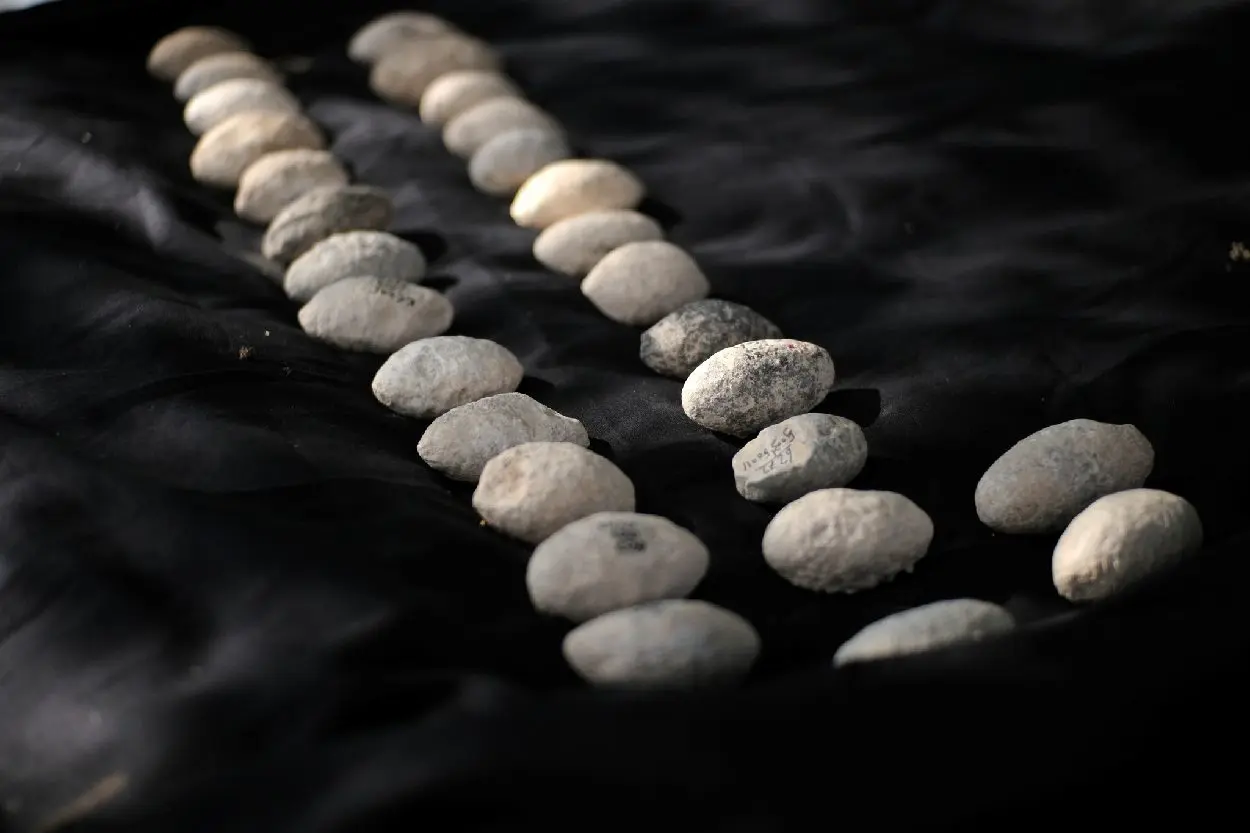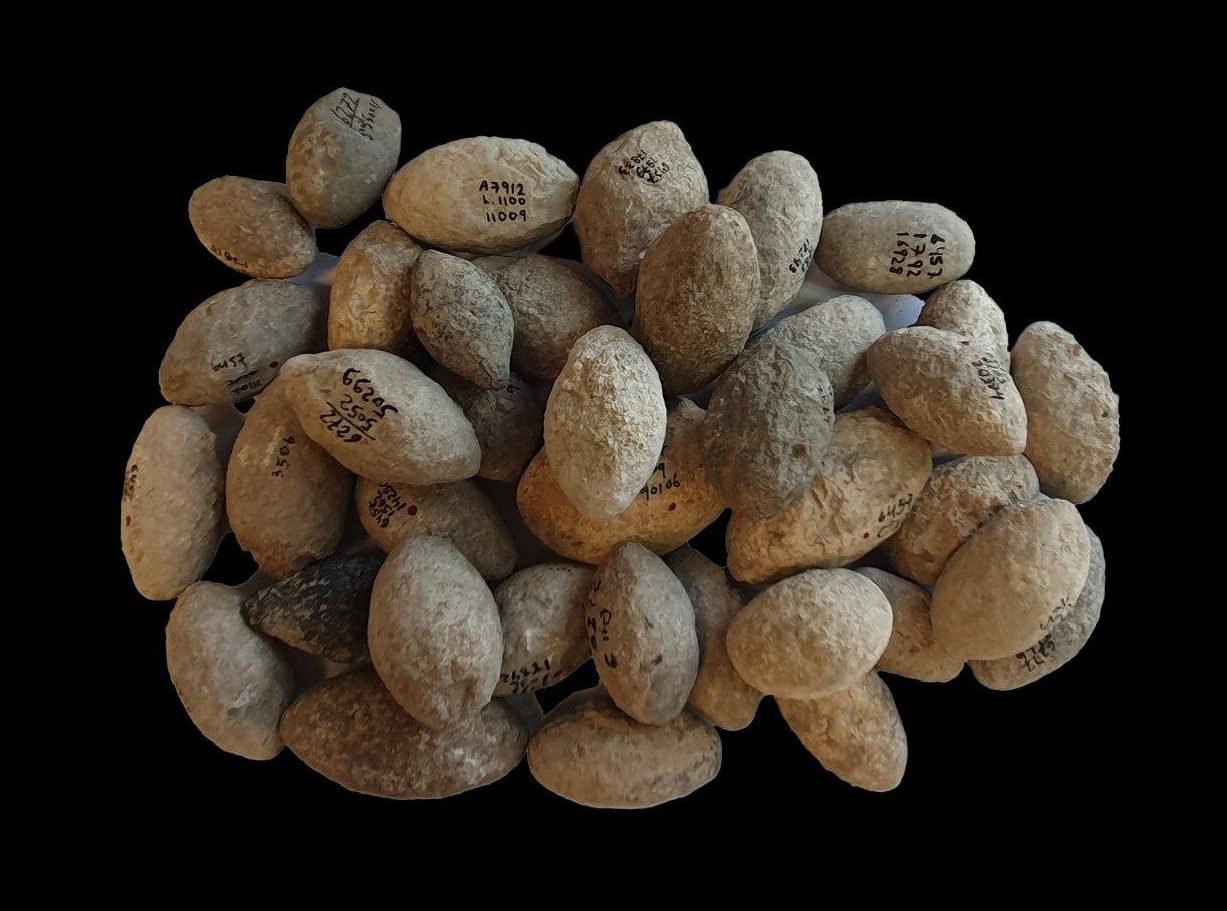Archaeologists from the Israel Antiquities Authority have uncovered the earliest evidence of mass weapon production in the Southern Levant.
In a study published in the journal Atiqot 111, the researchers have found hundreds of identical slingstones from ‘En Esur in the northern Sharon plain and ‘En Zippori in the Lower Galilee.
Dr. Gil Haklay, Enno Bron, Dr. Dina Shalem, Dr. Ianir Milevski, and Nimrod Getzov from the Israel Antiquities Authority examined 424 slingstones dating back to the Early Chalcolithic period (circa 5800–4500 BC).
The study revealed that almost all the slingstones were identical in size, with an average length of 52 mm, a width of about 321 mm, and an average weight of 60g. According to the researchers, this indicates that there was mass production of weapons as far back as 7,200 years ago.

“The stones, that were intended to be projected from a sling, are smoothed with a specific biconical aerodynamic form, enabling exact and effective projection,” say the archaeologists. “Similar slingstones have been found at other sites in the country, mainly from the Hula Valley and the Galilee in the north to the northern Sharon, but this is the first time that they have been found in excavations in such large concentrations.”
“These stones are in fact, the earliest evidence of warfare in the Southern Levant. The similarity of the slingstones points to large-scale industrial production. The effort put into the aerodynamic form and the smoothing of the stones’ surfaces indicate that they were intended to be exact and deadly weapons,” said the researchers.
The abundance of slingstones and the considerable effort invested in their production suggest a deliberate readiness for conflict, potentially indicating a communal endeavour to create munitions. If so, it seems that in the Early Chalcolithic period, there was an escalation in preparations for warfare, involving a change from individual to large-scale production.
Header Image Credit : Israel Antiquities Authority







